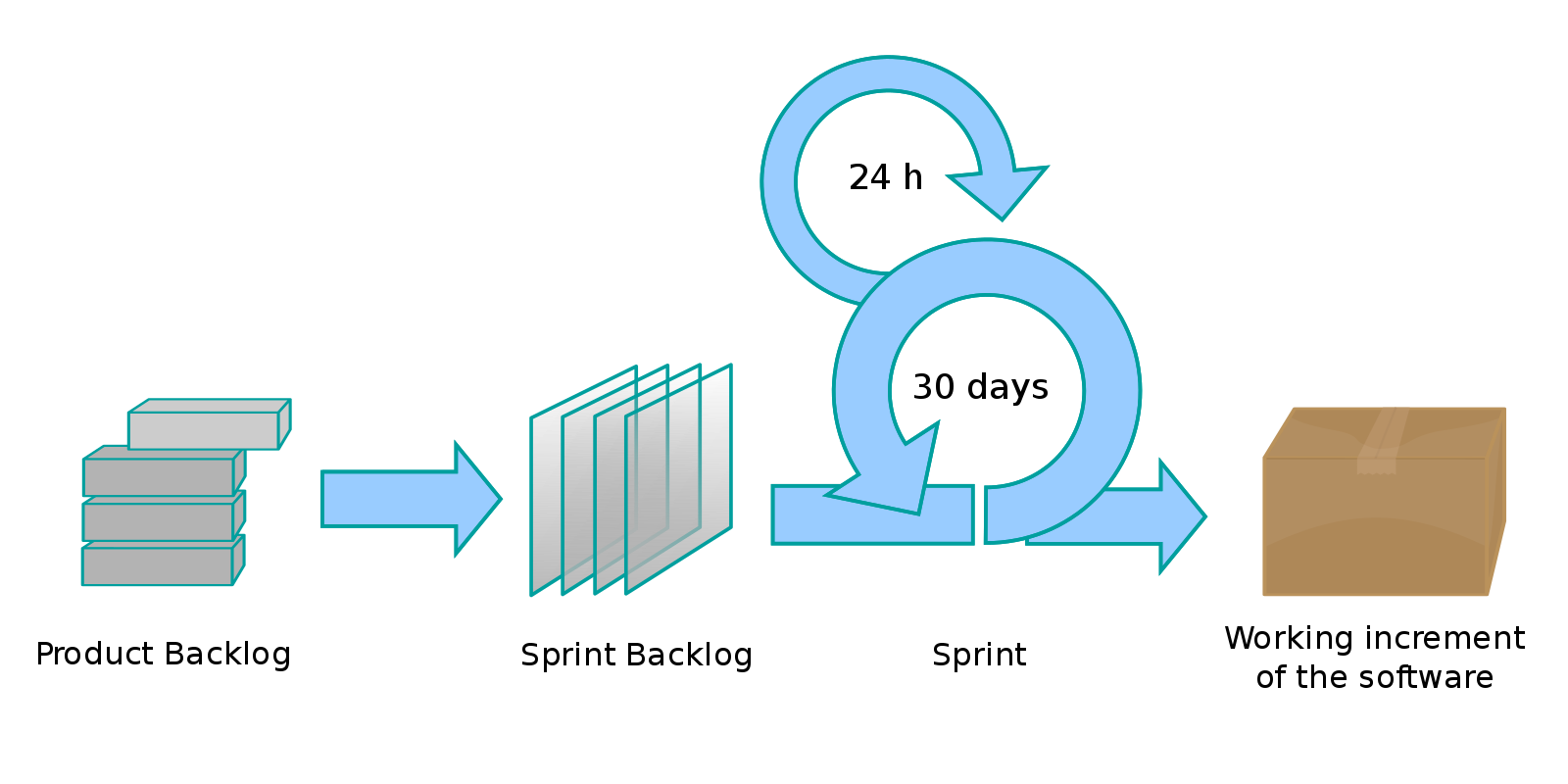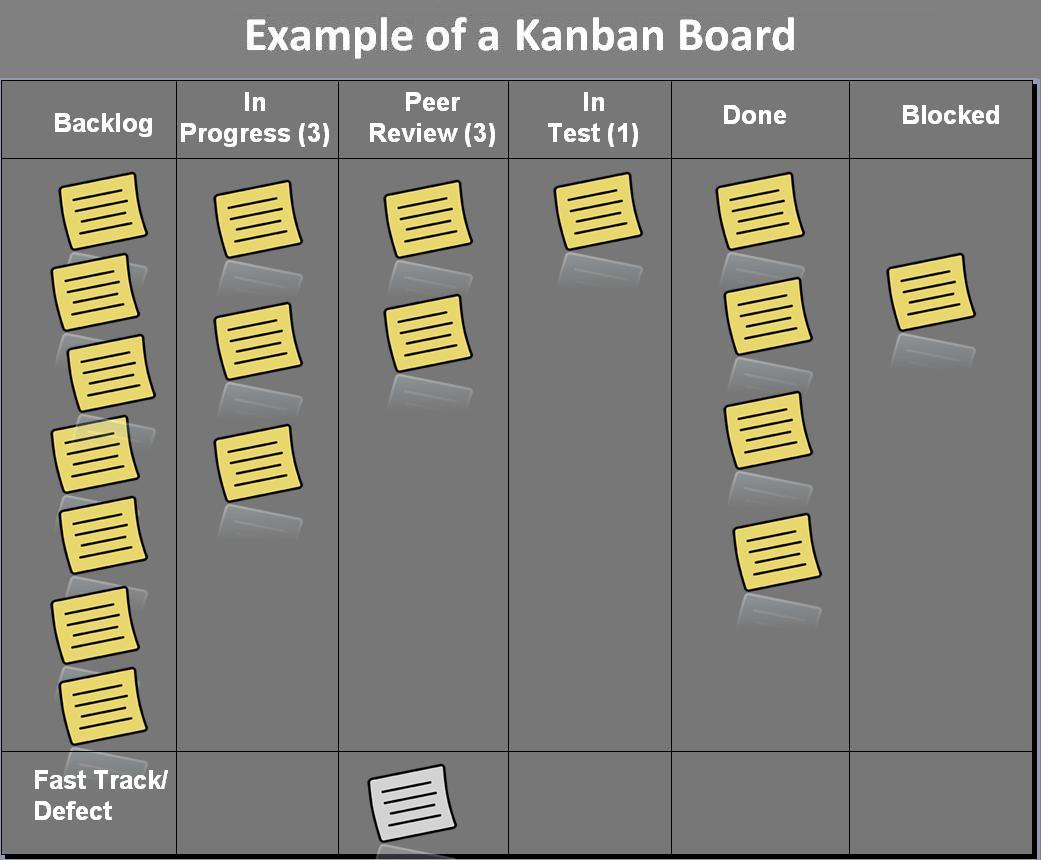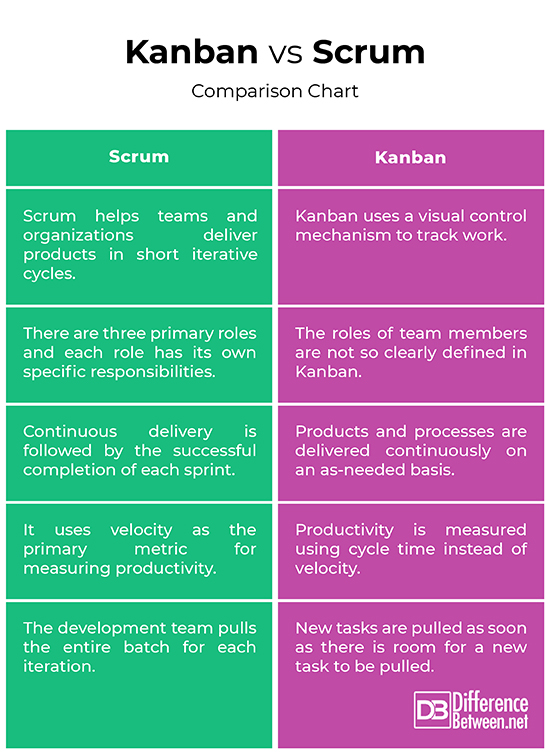Difference Between Kanban and Scrum
The classic waterfall model, introduced by Winston Royce in 1970, has been the most common and widely used project management approach in software development life cycle until it was surpassed by more sophisticated and much better approaches based on agile techniques around 2008. The phenomenal growth of agile has been attributed to the pitfalls in the traditional model and the many benefits the new approach brings. Agile began as an iterative, collaborative approach to software development, but over time, evolved into a set of well-articulated principles and values that it shares with Agile’s many varieties. That being said, Kanban and Scrum are two of the most popular Agile methodologies in widespread use.

What is Scrum?
Scrum is a lightweight yet incredibly powerful framework based on the agile methodology that helps teams work together. It is a flexible approach to agile software development that is based on the notion of iteration. Unlike the traditional waterfall model, where every task and project is broken down into linear sequential phases, Scrum helps teams and organizations deliver products in short iterative cycles. It is fast and reliable agile framework that aids in managing projects with more speed and flexibility. Scrum is designed to deliver value to your customers based on incremental processes, meaning it splits your work into small, concrete deliverables, or your team into small, cross-functional teams. Scrum describes a set of tools and methods that work in tandem to help teams organize and manage their work. Scrum can be employed in any project or product development effort, thereby delivering value to the customers in small and regular increments. Scrum is based on the concept of sprints.

What is Kanban?
Kanban is a workflow management system specially designed to help you visualize your work and tasks in progress by focusing on just-in-time delivery. It is an agile methodology based around three concepts: workflow visualization, limiting the work in progress, and measuring the lead time. Kanban is actually based on a very simple idea that work in progress should be limited and new work should begin only when the current work is being delivered or pulled by a downstream function. The word Kanban is derived from a Japanese word which means visual signal. It is not a software development and project management life cycle; instead, Kanban is an approach to change management that aims to deliver high-quality value to your customers, on time and on budget. It uses a visual control mechanism to track work as they pass through the different stages of the value stream. Unlike Scrum, Kanban focuses on cycle time – reducing the cycle time and identifying and addressing the problems in the workflow.
Difference between Kanban and Scrum
Approach
– Scrum is a flexible approach to agile software development that is based on the notion of iteration. Scrum helps teams and organizations deliver products in short iterative cycles. With Scrum, a task or project is broken up into a number of small, manageable iterations called sprints. Kanban is also an agile methodology where work is done iteratively, like Scrum, but it uses a visual control mechanism to track work as they pass through the different stages of the value stream.
Delivery Timeline
– Scrum is based on the concept of sprints and each spring is usually one or two weeks long. The project team completes a portion of the entire project, and the project is not finished until all the sprints are finished. So, continuous delivery is followed by the successful completion of each sprint. On Kanban, products and processes are delivered continuously on an as-needed basis. It focuses on just-in-time delivery of products and functionality by optimizing cycle time.
Roles and Responsibilities
– In any Scrum Team, there are three primary roles and each role has its own specific responsibilities: the product owner, who decides what to build; the Scrum master, who makes sure the team is using Scrum effectively and efficiently; and finally, the delivery team, which is responsible for delivering the final product. The roles of team members are not so clearly defined in Kanban.
Prioritization
–While both Scrum and Kanban use PULL systems for workflow management, Kanban being the most popular framework for employing the PULL system, they both do it in strikingly different ways. In Scrum, the PULL system works in batches meaning new tasks can only be pulled when the development team finished working on the current batch. The team pulls the entire batch for each iteration. Kanban, on the other hand, allows for new tasks to be pulled as soon as there is room for a new task to be pulled by the team.
Kanban vs. Scrum: Comparison Chart

Summary
In a nutshell, Scrum is based on the concept of iteration, meaning a project is broken up into smaller iterations called sprints. Each spring lasts for one to two weeks and the project is completed when all the sprints are finished. So, with Scrum, continuous delivery is followed by the successful completion of each sprint. Kanban is yet another agile methodology based on a very simple idea that work in progress should be limited and new work should begin only when the current work is being delivered or pulled by a downstream function. While both Kanban and Scrum share some similarities, Kanban is not Scrum and vice-versa.
- Difference Between Caucus and Primary - June 18, 2024
- Difference Between PPO and POS - May 30, 2024
- Difference Between RFID and NFC - May 28, 2024
Search DifferenceBetween.net :
Leave a Response
References :
[0]Layton, Mark C., et al. Agile Project Management For Dummies. New Jersey, United States: John Wiley & Sons, 2020. Print
[1]Brechner, Eric. Agile Project Management with Kanban. Washington, United States: Microsoft Press, 2015. Print
[2]Li, Patrick. Jira Software Essentials: Plan, track, and release great applications with Jira Software, 2nd Edition. Birmingham, United Kingdom: Packt Publishing, 2018. Print
[3]Kniberg, Henrik and Mattias Skarin. Kanban and Scrum - Making the Most of Both. North Carolina, United States: Lulu Press, 2010. Print
[4]Malakar, Sudipta. Agile Methodologies In-Depth: Delivering Proven Agile, SCRUM and Kanban Practices for High-Quality Business Demands. New Delhi, India: BPB Publications, 2021. Print
[5]Image credit: https://commons.wikimedia.org/wiki/File:Scrum_process.svg
[6]Image credit: https://commons.wikimedia.org/wiki/File:Kanban_board_example.jpg
